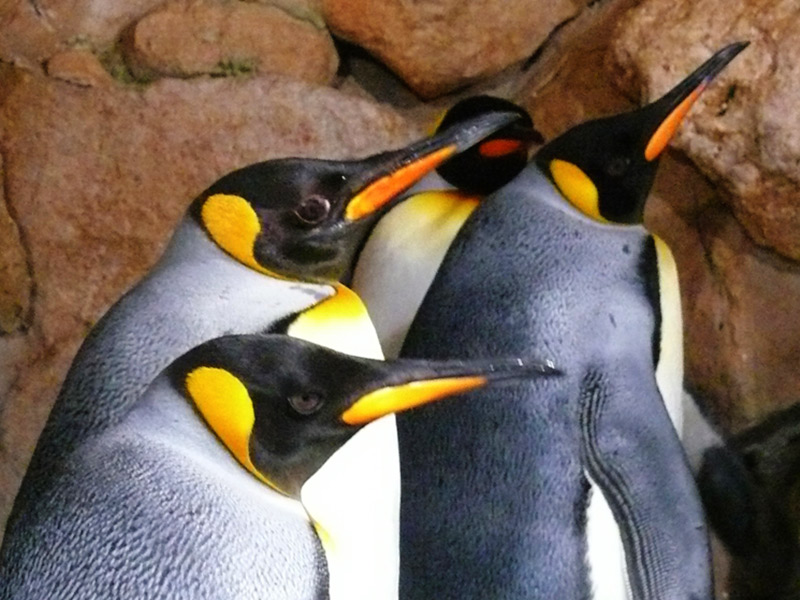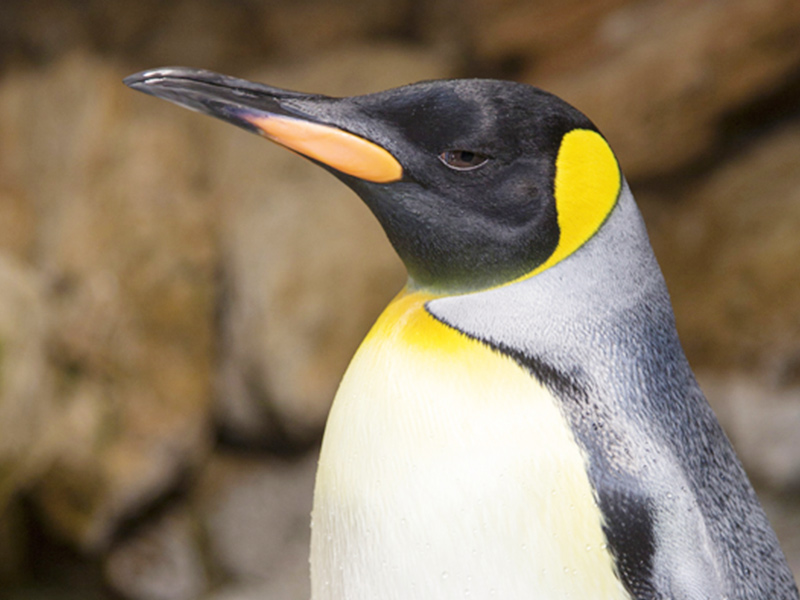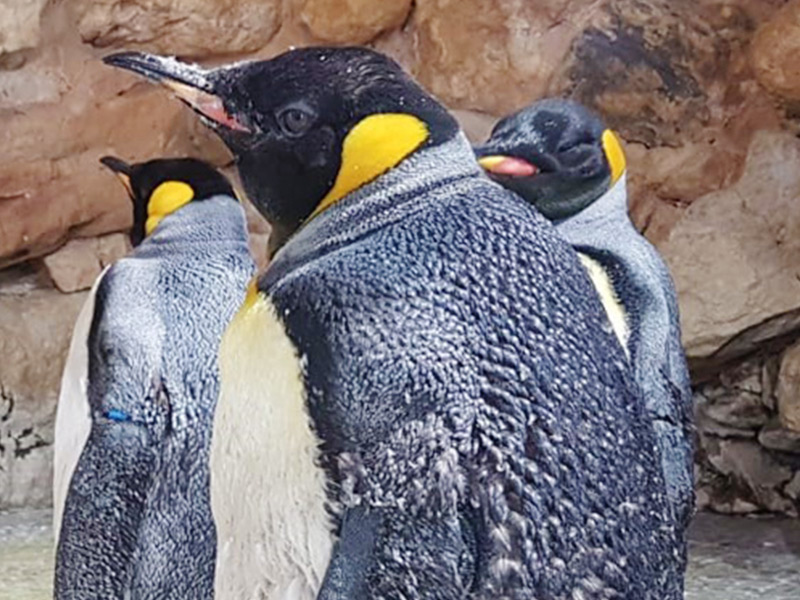The King penguin is the second largest of the 18 penguin species in the world, the first being the Emperor Penguin. There is no real sexual dimorphism between males and females.
The King penguin is the second largest of the 18 penguin species in the world, the first being the Emperor Penguin. There is no real sexual dimorphism between males and females. King penguins measure between 85 and 95 cm and weigh between 9 and 15 kg. They reach sexual maturity between 5 and 7 years old. Their longevity is 15 to 20 years.
King penguins live on the coasts of the sub-Antarctic islands as well as on the southern coast of Argentina during the winter months.
As a result of its presence in the Kerguelen and Crozet islands, the King penguin is included in France's wildlife.
The King penguin goes ashore to mate, raise its young and moult. It chooses flat beaches that are free of snow and ice. When it returns to the sea after the breeding season, it is pelagic, i.e. it lives in the open sea.
King penguins are gregarious and gather in colonies by the thousands. They moult just before the breeding season allowing them to don attractive plumage for courtship. A single egg is laid in the spring (between November and March). King penguins do not make a nest, the egg is incubated on their feet, beneath a fold of skin from their belly. Incubation lasts between 52 and 56 days. The father and mother alternate every 20 days or so, giving the non-brooding parent the opportunity to feed. The chick hatches during the winter (between May and August). It is covered with a thick brown down. The young chick is fed by the parent who returns from fishing, regurgitating some of the fish it has caught.
When the chick is a few months old, the parents both go out to sea, further and longer. The chick will then fast for 4 months. It is then that it joins the other chicks in a nursery. When the parents return, they find their offspring through vocalisations. They feed them until they moult at around 13 months of age, at which point they are weaned.
King penguins have the longest breeding cycle of any penguin (between 14 and 16 months). They can therefore only give birth to 2 chicks in three years. King penguins are not faithful and usually change partners each mating season.
King penguins only feed in the open sea, diving between 70 and 200 m deep. They feed on fish and cephalopods. They capture their prey by chasing them at speeds of up to 12 km/h.
The King penguin has been through some tough times. On certain sub-Antarctic islands, at the beginning of the 20th century, the population was almost exterminated due to the harvesting of oil and feathers. The fishing industry had depleted the penguin's food supply. Today, the population has returned to a non-critical size and continues to increase.
Populations are currently estimated at 2,000,000 individuals.
As this species is not currently endangered, it is important to keep its habitat intact by minimising pollution, human disturbance and global warming. Indeed, as the climate warms, prey distributes differently and may move away from the usual feeding points forcing the parents to feed further away and thus leaving the chicks to fast for even longer which would reduce their chances of survival.










/European-Ex-situ-program-Marineland-main.jpg)
/European-Ex-situ-program-Marineland-main.jpg.transform/rendition-xs/image.jpg)



